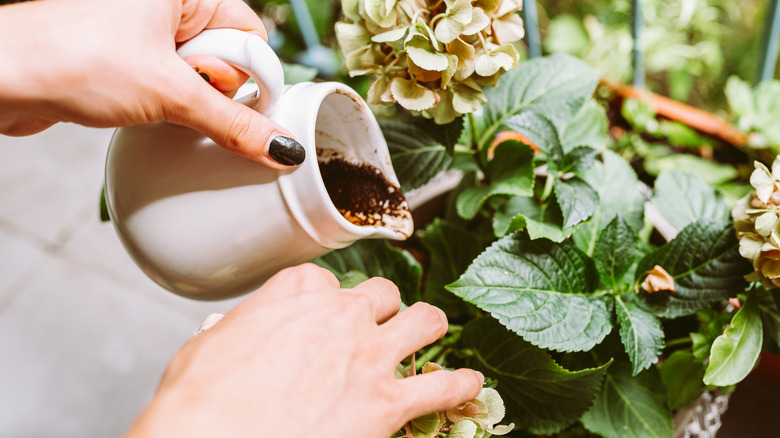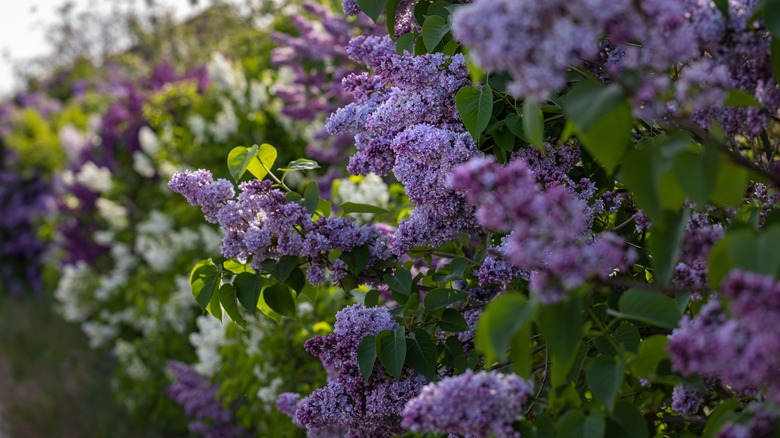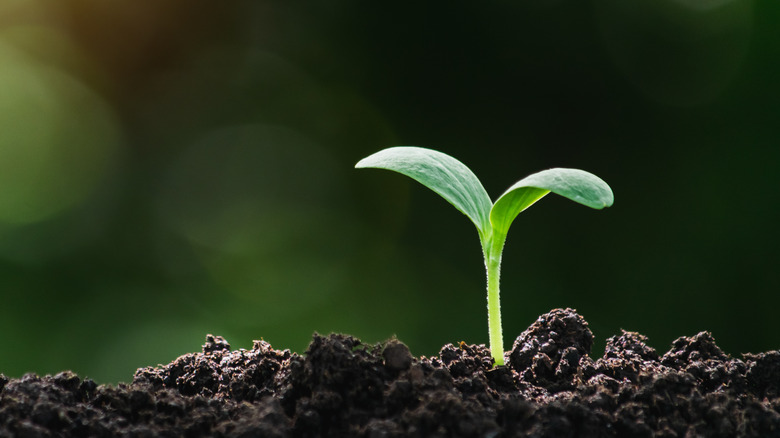Never Fertilize These Plants In Your Garden With Coffee Grounds
We may receive a commission on purchases made from links.
Some people swear by coffee grounds in their garden, while others warn caffeine can lead to stunted growth and wilted plants. But before you douse every inch of your flower beds with coffee, beware. This trendy hack may actually hurt certain types of plants in your yard.
First, coffee grounds — especially those that haven't been brewed – can sometimes be acidic, and could affect the pH levels of soil, especially if used in large quantities. This means alkaline-soil-loving plants like the common lilac (Syringa spp.) shrub, vegetables such as asparagus and beets, or herbs like lavender, thyme, and oregano might prefer to skip that morning cup of coffee.
Some acid-loving plants and shrubs, like blueberries, would love extra coffee grounds. Pinxterbloom azalea also prefers acidic soil and is likely to gobble up coffee-laced fertilizer. However, lilac shrubs and other more alkaline plants aren't likely to be helped by coffee, since they suffer if pH levels become too acidic.
Use caution when using coffee grounds, especially for alkaline-loving plants
Alkaline-loving flowering plants like lilac, tulips, sunflowers, or vegetables such as asparagus can wilt if their soils become too acidic. You can tell that some plants might have gotten too much coffee as plant food if you see their leaves begin to yellow or their tips begin to brown. Discolored leaves sometimes indicates that the pH levels in the soil might be off.
Keep in mind that research varies when it comes to how significantly coffee grounds can change the pH of soil. The University of Minnesota suggests acidity of the soil caused by coffee likely won't last long. So if you're hoping to make alkaline soil more acidic for on a long-term basis with coffee, you will be disappointed. To permanently lower your soil pH, aluminum sulfate from your favorite garden store is a better bet, or grab some Earth Science fast-acting sulfur.
There's also a big difference in the acidic levels of coffee grounds before they're brewed and after, with used coffee grounds being less acidic than fresh ones. This is why it's a safer bet to compost coffee grounds first before using as fertilizer if you want the best benefits. However, the acidity levels in your used coffee grounds aren't the only thing you'll need to worry about — you also need to consider the effects of the caffeine and other toxicities in coffee grounds.
Caffeine can also affect the growth of some plants
There can be unintended effects of caffeine on plants – especially for younger seedlings — where too much caffeine can suppress their growth or even damage their delicate roots. Caffeine and other chemicals in coffee might cause some seeds not to germinate, so avoid using coffee fertilizer on young plants, as well as your alkaline-loving ones like lilac and lavender, just to be safe.
Even plants that like the acidity of coffee grounds or thrive on caffeine can have too much of a good thing, and overdoing it with coffee-laced fertilizer might lead to shrunken plants or yellowed leaves. Moderation is key so that you can take advantage of some of coffee's other benefits to your garden, including slowing the growth of fungus and undermining rot and killing pests like slugs.
If you fear you've overdone it with coffee grounds, and soil tests find acidic conditions with lower pH levels, you can still reverse the negative effects. If you want to make your soil more alkaline, you can add in wood ash or garden lime. The best rule of thumb is not to overdo it with any particular fertilizer and keep in mind the ideal pH levels for your garden.


